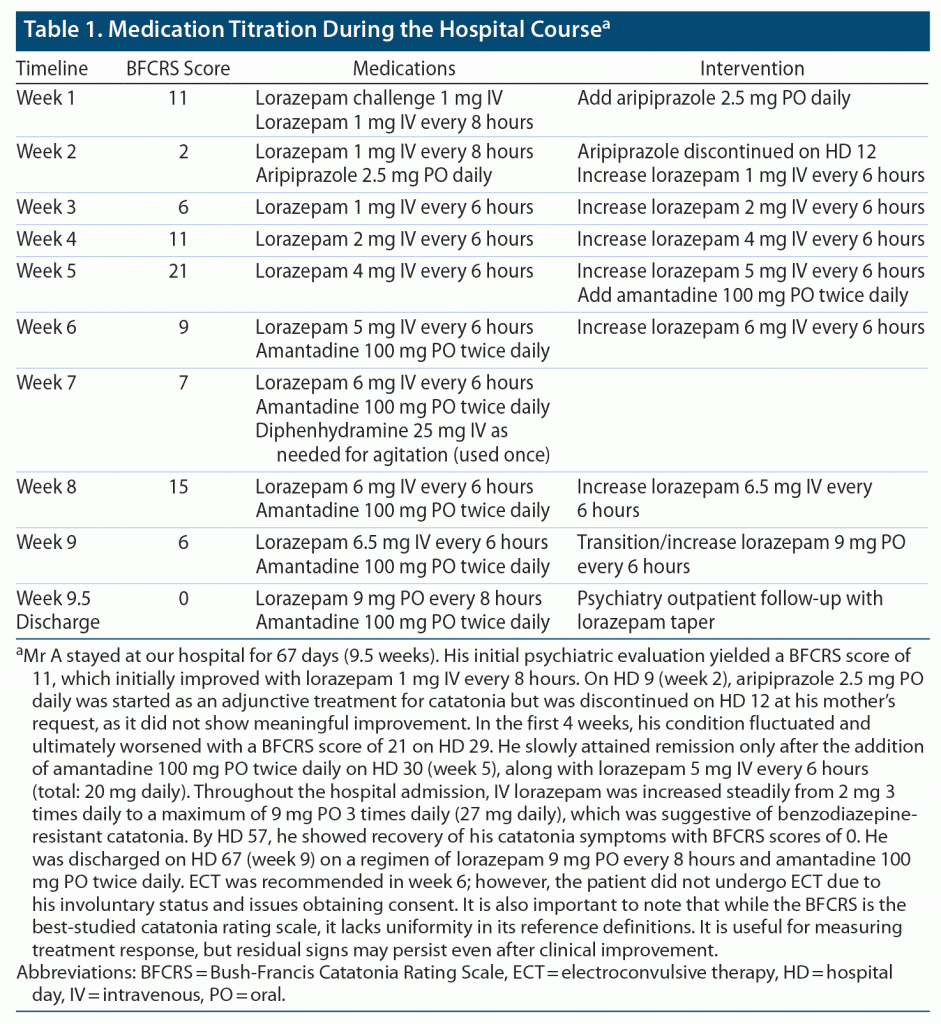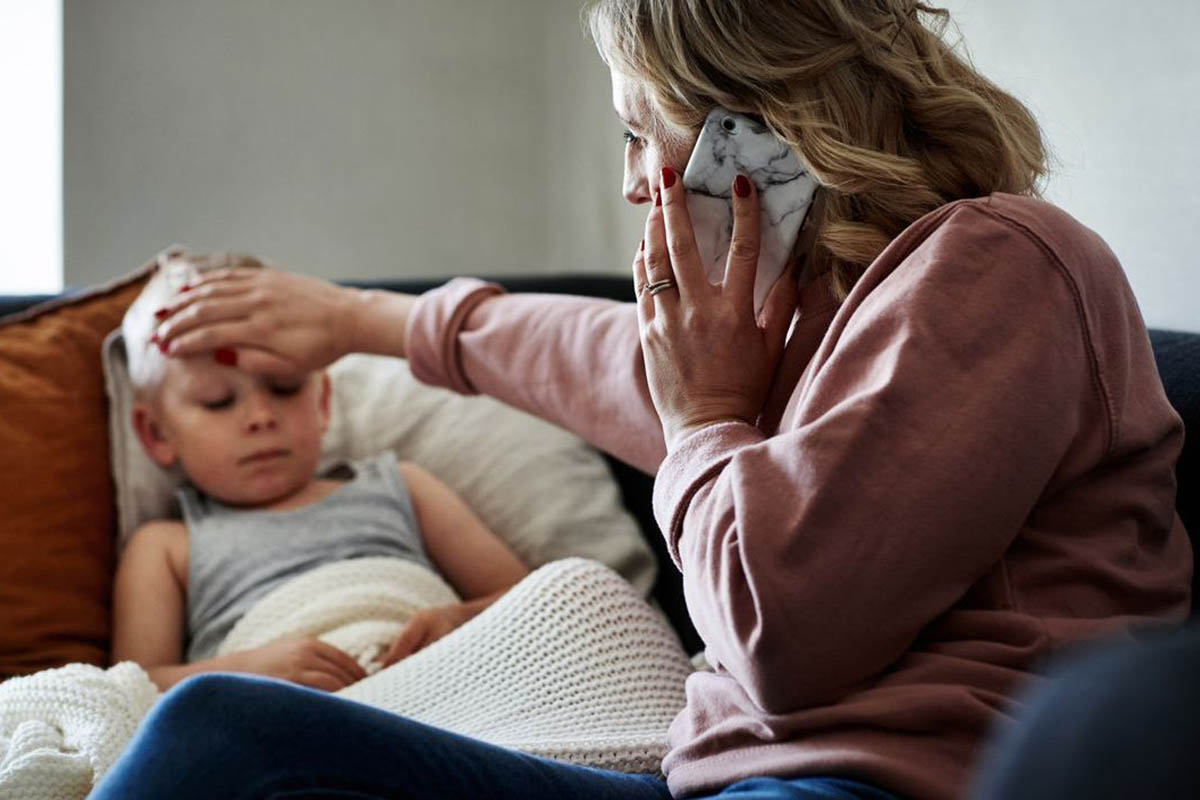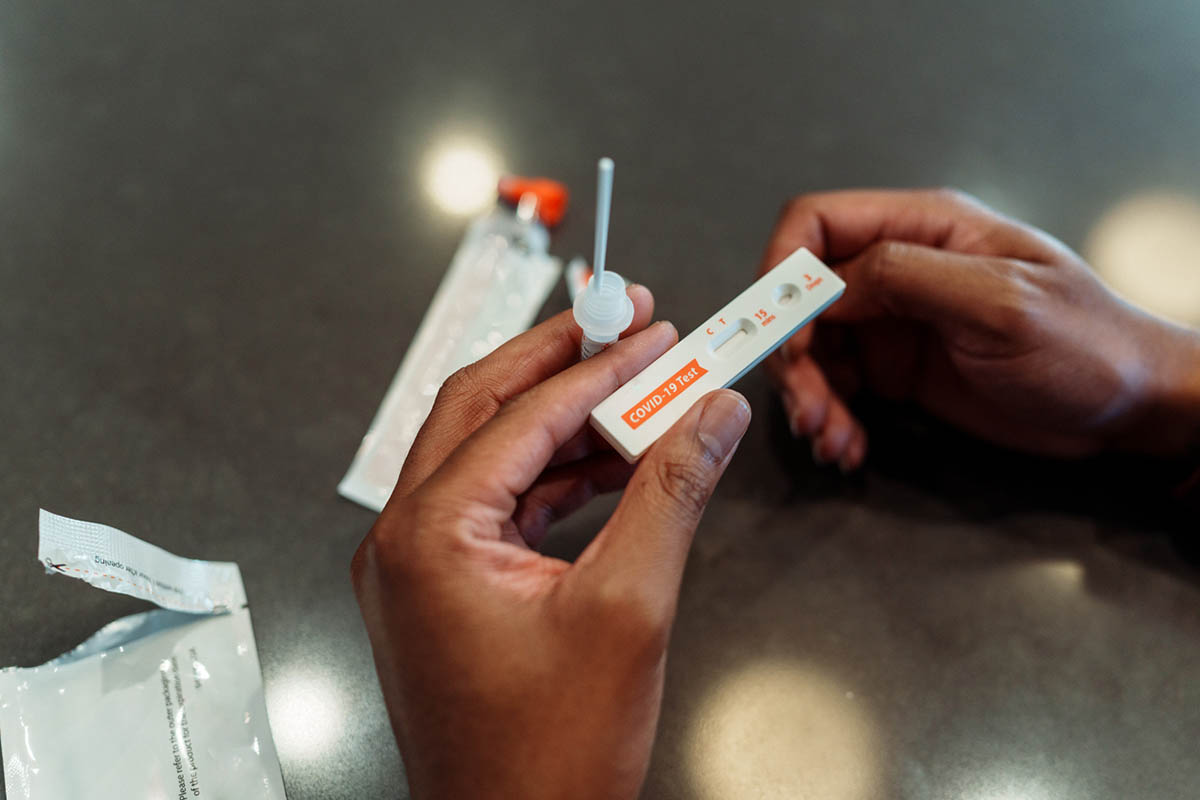
Prim Care Companion CNS Disord 2022;24(6):22cr03394
To cite: Oh J, Amber-Monta K, Ammar S, et al. COVID-19–associated benzodiazepine-resistant catatonia responds to amantadine. Prim Care Companion CNS Disord. 2022;24(6):22cr03394.
To share: https://doi.org/10.4088/PCC.22cr03394
© 2022 Physicians Postgraduate Press, Inc.
aCooper Medical School of Rowan University, Camden, New Jersey
bDepartment of Psychiatry, Lehigh Valley Health Network, Allentown, Pennsylvania
cDepartment of Psychiatry and Behavioral Health, Cooper University Health Care, Camden, New Jersey
*Corresponding author: Maju Mathew Koola, MD, Department of Psychiatry and Behavioral Health, Cooper University Health Care, Cooper Medical School of Rowan University, 401 South Broadway, Camden, NJ 08103 ([email protected]).
As of August 2022, severe acute respiratory syndrome coronavirus 2 (SARS-CoV-2) has claimed over 6.4 million lives worldwide.1 There has been a growing number of reports of the akinetic variant of catatonia in patients with SARS-CoV-2 infection,2 exceeding all other viral infections. The objective of this case report is to discuss the successful use of amantadine that resulted in the remission of benzodiazepine-resistant catatonia associated with COVID-19 infection. This case is important given the lack of research on preferred treatments of catatonia in the setting of COVID-19 infection.
Case Report
Mr A is a 20-year-old Black man with a history of autism spectrum disorder (ASD), major depressive disorder (MDD), and generalized anxiety disorder (GAD), but no medical conditions, who presented to Cooper University Hospital (CUH) with altered mental status. At baseline, he was found to be independent and employed and had graduated high school with special education classes. Approximately a week before admission to CUH, he was evaluated at his local emergency department (ED) for seizure-like episodes, abdominal pain, and anosmia. He tested positive for SARS-CoV-2 via nasopharyngeal polymerase chain reaction. Although the patient was uncooperative with electroencephalogram (EEG) studies, the neurology team had a low suspicion for seizures and suspected a psychiatric etiology. He was discharged after 3 days to be treated with levetiracetam 500 mg oral daily with an outpatient follow-up epilepsy evaluation, EEG, and magnetic resonance imaging (MRI). Three days later, the patient started to develop signs and symptoms of catatonia and returned to his local ED for worsening agitation. His behavior fluctuated between unresponsive staring episodes and worsening agitation. A non-contrast head computed tomography scan, chest x-ray, and MRI were within normal limits. The neurology consultation found his presentation inconsistent with epilepsy. Mr A was transferred to CUH for further evaluation.
The patient’s initial psychiatric examination yielded a 23-item Bush Francis Catatonia Rating Scale3 (BFCRS) score of 11, positive for stupor, mutism, staring, catalepsy, rigidity, negativism, and withdrawal. He was nonverbal, unable to follow commands, and presented with a restricted affect. The patient’s physical and neurologic examinations were unremarkable. The EEG showed no epileptiform abnormalities or seizures.
The neurology team’s impression of Mr A’s condition was highly suspicious for catatonia with a low suspicion for a primary neurologic pathology. Intravenous lorazepam 1 mg was administered with subsequent improvement in mutism and rigidity. During the mental status examination, the patient was calm, cooperative, and grossly oriented. He continued to show intermittent speech latency and residual signs of confusion regarding his condition. He denied symptoms of depression, mania, and psychosis but was found to have intermittent anxiety over the past few weeks. The initial psychiatric impression was unspecified catatonia, given the patient’s treatment response and overt signs of negativism and catalepsy. We also considered other possible etiologies, including post–COVID-19 encephalitis, akinetic mutism, mood disorder with psychotic features, and delirium. The majority of Mr A’s diagnostic imaging studies and laboratory work (including blood cultures, lumbar puncture, and inflammatory markers) were within normal limits.
Mr A stayed at CUH for 9.5 weeks with a hospital course complicated by benzodiazepine-resistant catatonia, requiring multiple pharmacologic interventions. His daily BFCRS scores are shown in Table 1. He initially improved with lorazepam 1 mg intravenous (IV) every 8 hours, but over weeks 2 to 4, he would often fluctuate between stuporous and excited catatonic states. He was unable to receive electroconvulsive therapy (ECT). As shown in Table 1, Mr A attained remission in week 5 only after treatment with amantadine, an N-methyl-D-aspartate (NMDA) antagonist and dopamine reuptake inhibitor. There were no reported side effects or signs of intolerance with the addition of amantadine, including nausea, dizziness, and insomnia. Overall, his symptoms showed a fluctuating decline based on BFCRS scores. Lorazepam was increased from 1 mg IV 3 times daily to a maximum of 9 mg 3 times oral daily (27 mg daily). The final regimen at discharge was amantadine 100 mg oral twice daily and lorazepam 9 mg oral 3 times daily, which proved to be the best intervention for his catatonia. We did not taper lorazepam during Mr A’s hospital stay due to his complicated course of catatonia. His functioning improved with cognitive rehabilitation, occupational/speech therapy, and outpatient psychiatry follow-up. The outpatient psychiatry team tapered his lorazepam over several months. Mr A continues his recovery from catatonia and has returned to his baseline mental status and favorite activity of playing basketball.
Discussion
This case is unique, as it provides a discussion of treatment strategies for benzodiazepine-resistant catatonia associated with COVID-19 infection. While there is a possibility that SARS-CoV-2 may have contributed to the catatonia symptoms in this patient, it is important to recognize his past psychiatric diagnoses (ASD, MDD, GAD) as risk factors. The mechanisms underlying COVID-19 infection and catatonia are still yet to be elucidated, but inflammatory, stress, and psychological factors have been proposed.2 The current literature studying COVID-19 and catatonia is mostly limited to case reports, with a heterogeneity of clinical presentations. Lorazepam was successfully used in 18 patients, who demonstrated notable improvements in core symptoms of catatonia, including mutism, echolalia, rigidity, and waxy flexibility.4 ECT was also effective in 4 patients.4 This finding is consistent with previous literature supporting lorazepam and ECT as effective first-line treatments, particularly in acute catatonia, irrespective of the cause.5 However, there is a lack of studies on other potential treatments for benzodiazepine-resistant catatonia associated with COVID-19 infection. In a naturalistic study6 of 66 children and adolescents with catatonia, it was found that benzodiazepines improved catatonia in 65% of cases. It is particularly important for clinicians to be aware of other potential treatments (eg, ECT, amantadine), as it has been shown that approximately 30% to 35% of cases do not respond to benzodiazepines.6 Thus, there is a need for research on the possible etiopathogenetic role of SARS-CoV-2 in catatonia that may inform novel therapeutics for this rapidly emerging health condition.
When catatonia fails to respond to increasing doses of lorazepam, as we saw in this patient’s case, we suggest considering the use of an oral NMDA antagonist (eg, amantadine, memantine), especially when ECT is unavailable. Other NMDA antagonists include dextromethorphan/quinidine7 and minocycline.8 This is consistent with previous literature demonstrating the successful use of oral amantadine in benzodiazepine-resistant pediatric catatonia, suggesting the importance of glutamatergic/NMDA hyperactivity in the development of catatonia symptoms.9 We recommend a starting dose of amantadine of 100 mg oral daily, which can be titrated by 100 mg every 3 to 4 days to a total dosage of 600 mg daily in divided doses. Memantine can alternatively be used starting at 10 mg oral daily to a total dosage of 20 mg daily. Amantadine can be used as monotherapy or in combination with benzodiazepines.10 It is generally well tolerated, as seen in our patient, with the most commonly reported side effects being nausea, dizziness, and insomnia (5%–10% incidence).11
This is the first case report, to our knowledge, highlighting the use of amantadine in benzodiazepine-resistant catatonia associated with COVID-19 infection.12 The combination of amantadine and lorazepam was safe, effective, and tolerable and may be a useful approach in managing COVID-19–associated catatonia resistant to benzodiazepines. As the pandemic persists, we hope to bring our community’s attention to COVID-19–associated catatonia and the use of amantadine in benzodiazepine-resistant catatonia.
Submitted: August 10, 2022.
Published online: November 17, 2022.
Author contributions: Ms Oh prepared the first draft of the manuscript. All authors edited the manuscript with intellectual contributions and approved the final version of the manuscript.
Relevant financial relationships: None.
Funding/support: None.
Patient consent: Consent was received from the patient to publish the case report, and information has been de-identified to protect anonymity.
References (12)

- World Health Organization. WHO Coronavirus Disease (COVID-19) Dashboard. WHO website. Accessed October 20, 2022. https://covid19.who.int/
- Scheiner NS, Smith AK, Wohlleber M, et al. COVID-19 and catatonia: a case series and systematic review of existing literature. J Acad Consult Liaison Psychiatry. 2021;62(6):645–656. PubMed CrossRef
- Bush G, Fink M, Petrides G, et al. Catatonia, I: rating scale and standardized examination. Acta Psychiatr Scand. 1996;93(2):129–136. PubMed CrossRef
- Dawood AS, Dawood A, Dawood S. Catatonia after COVID-19 infection: scoping review. BJPsych Bull. 2022:1–12. PubMed CrossRef
- Sienaert P, Dhossche DM, Vancampfort D, et al. A clinical review of the treatment of catatonia. Front Psychiatry. 2014;5:181. PubMed CrossRef
- Raffin M, Zugaj-Bensaou L, Bodeau N, et al. Treatment use in a prospective naturalistic cohort of children and adolescents with catatonia. Eur Child Adolesc Psychiatry. 2015;24(4):441–449. PubMed CrossRef
- Miles JH, Takahashi N, Muckerman J, et al. Catatonia in Down syndrome: systematic approach to diagnosis, treatment and outcome assessment based on a case series of seven patients. Neuropsychiatr Dis Treat. 2019;15:2723–2741. PubMed CrossRef
- Ahuja N, Carroll BT. Possible anti-catatonic effects of minocycline in patients with schizophrenia. Prog Neuropsychopharmacol Biol Psychiatry. 2007;31(4):968–969. PubMed CrossRef
- Sorg EM, Chaney-Catchpole M, Hazen EP. Pediatric catatonia: a case series-based review of presentation, evaluation, and management. Psychosomatics. 2018;59(6):531–538. PubMed CrossRef
- Carroll BT, Goforth HW, Thomas C, et al. Review of adjunctive glutamate antagonist therapy in the treatment of catatonic syndromes. J Neuropsychiatry Clin Neurosci. 2007;19(4):406–412. PubMed CrossRef
- Hosenbocus S, Chahal R. Amantadine: a review of use in child and adolescent psychiatry. J Can Acad Child Adolesc Psychiatry. 2013;22(1):55–60. PubMed
- Fink K, Nitsche A, Neumann M, et al. Amantadine inhibits SARS-CoV-2 in vitro. Viruses. 2021;13(4):539. PubMed CrossRef
Please sign in or purchase this PDF for $40.
Save
Cite




